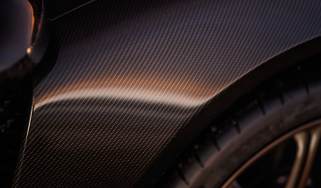Peugeot 207 GTi
Is the newcomer up to the task of reviving past hot hatch glories?
Peugeot is rightly proud of its sporting heritage in the small performance car market. Down the years it has produced some wonderful hatches, such as the 306 GTi-6, 106 Rallye and, of course, the 205 GTi. The last of these is one of the best-loved superminis around, but has now become something of a millstone around the French manufacturer’s neck.
The pressure to recreate the magic which made the 205 so great is immense. So how does the new model stack up? First impressions aren’t entirely favourable. The standard 207 shape is far from unattractive – in fact, it’s a neat and well executed design – but it’s not memorable, either. Therefore you would expect the GTi’s designers to go to town on the flagship model, right?
Think again. If you want visual impact, then the 207 won’t float your boat. Aside from the twin exhaust pipes, there’s little to suggest that this is a performance car, which is a real shame. But all credit to Peugeot. It has realised where it has gone wrong, and from next month it will give the GTi a beefier bodykit, after deciding that the current styling is too understated – although the price will rise by £400 as a consequence.
The current subtle approach is reflected in the interior, which is drab and lifeless. Buyers used to that special aura that comes with most hot hatches will feel very short-changed.
It’s not all bad news, though. The 207’s strengths remain in place, which means a spacious cabin, decent storage and a comfortable driving position. Rear passengers are reasonably well looked after, too, although an unusually high central seat means it’s really only ideal for two in the back. But in terms of load-carrying capacity, the 207 leads the way – it has the largest boot, at 310 litres, and this expands to a useful 1,195 litres when the seats are folded. That’s nearly double the space available in the MINI.
What the GTi does share with the Cooper S is the excellent 1.6-litre engine. Thanks to a twin-scroll turbocharger, there is no noticeable lag, and with maximum torque of 244Nm available from only 1,600rpm, it has great overtaking punch.
As in the British-built car, the powerplant is responsive and free-revving, plus the 207 has the benefit of a raspy exhaust note. So it’s a real shame that it’s mated to a poor five-speed gearbox. This hampered the 207 at the test track, where it was the slowest of our quartet. It managed the 0-60mph sprint in seven seconds flat, but was off the pace from 30-70mph, taking 6.6 seconds – a second longer than the VXR.
Yet perhaps the 207’s biggest letdown is the handling. Although it features uprated suspension, the chassis is still softer than any of its rivals, so grip levels aren’t up to scratch and it doesn’t feel particularly agile or composed. However, the steering is better weighted than the standard car’s, and less artificial than the Clio’s.
What’s most noticeable is that the 207 doesn’t particularly relish corners. It’s capable, but there’s no zest or excitement to the driving experience.
A latter-day 205 GTi? Most definitely not. Nor is the ride that cosseting – it feels busy over rough surfaces and can become crashy around town.
One area where the 207 triumphs is its cost. At £14,995, it’s the cheapest here by £615, and if you add the £1,000 Octane Pack – which includes climate control, parking sensors and cruise control – it’s even better value. But is that enough to compensate for its shortcomings?
Details
Price: £14,995
Model tested: Peugeot 207 GTi
Chart position: 4
WHY: Peugeot has finally produced a hot hatch 207, but can the GTi recapture the magic of the 205?
Economy
The 1.6-litre engine is shared by the 207 and Cooper S, but the Peugeot averaged 32.5mpg – which is 1mpg less than the MINI. That’s mainly because it only has a five-speed box.
Residuals
Used values aren’t available for the 207 GTi, as it’s yet to appear in dealers. The 207 GT, which uses the same engine, holds 44.5 per cent after three years, so expect a similar figure.
Servicing
Peugeot finished 28th out of 32 in our Driver Power 2007 dealer survey, with owners saying they don’t get good value. Three check-ups cost £570, but the 20,000-mile intervals are long.
Tax
The 207’s engine has been retuned to deliver more torque, so has a higher CO2 output than the MINI’s. This puts it two tax brackets higher, with a £693 bill for lower-band users.







